Pearly-eyed Thrasher - Bosque Estatal de Guánica, Puerto Rico
NOTE: this information was accurate as of our trip in mid-March of 2022. It will undoubtedly change as time goes by.
Having just completed a week-long vacation in Puerto Rico focused primarily on bird-watching, I wanted to share some observations that might be helpful for others planning to do the same. Please note that we aren't top level birders who were focused on seeing every endemic species -- we just wanted to have fun seeing a variety of cool new birds. So that perspective influences my comments.
The Book
If you have been researching places to bird in PR, you have undoubtedly found out about "A Birdwatchers' Guitd to Cuba, Jamaica, Hispaniola, Puerto Rico, and the Cayans", by Kirwan, Kirkconnell, and Flieg. We purchased this book and it was helpful for deciding places to go and for some ideas about what we were likely to see at different locations. However, the edition of the book we bought (copyright 2010 and I think the most recent) is hopelessly outdated and therefore much of the information is useless.
There are several ways that the book was dated. It spends a lot of time explaining particular hotels where you might want to stay and gives descriptive text (go x miles, turn right on road so-and-so) describing how to get to the sites and hotels. In 2022 you'd be much better off getting an AirBNB than using the outdated hotel information. They are available all over the island for half the cost of the hotels and the two we stayed in were clean, safe, and had friendly and helpful hosts. There was also no point in trying to follow the text descriptions. For example: take "the beach road" past some mangrove trees -- which road was the beach road and which of the many mangroves were the right ones? The hand-drawn maps also usually did not seem to bear much resemblance to reality. Thankfully, I had used Google Maps to locate the preserves we visited in advance and save the locations. We were then able to drive directly to them using Google Maps on our phone. (I've included coordinates and links in the text below.) Another problem with the book was that some of the information about facilities was out of date, so we ended up discovering the actual situation (usually: closed) by arriving and finding out in person. The last deficiency (in my opinion) is that the book is super-focused on the birder who MUST see every endemic, so about a third of the text is devoted to how to see three or four of the most difficult birds, which was not our primary concern. So for "normal" birders like us, getting this book was helpful for thinking about where to go and for knowing likely birds to see, but that was about it.
General observations
If you have birded in a place like Costa Rica with a well-developed ecotourism industry, you will find Puerto Rico somewhat disappointing. Thankfully, PR does have a significant number of protected areas that are publicly accessible, but don't expect much in the way of signage, interpretation, or knowledgeable rangers or local guides. It became almost a joke with us that nearly every vistors' center and developed bathroom was closed and locked. This may be partly due to lingering effects of the hurricanes a few years ago and also the government fiscal crisis, but the bottom line is: bring your own toilet paper and use bathrooms whenever you have the opportunity. The main exception to this was the shiny new National Forest Service visitors' center in El Yunque, which I'll describe in more detail later.
Getting around is relatively easy if you rent a car. Nearly all of the roads we drove on were paved, although you can expect some of them to be pretty narrow and on some roads potholes were abundant. With the exception of Rio Abajo State Forest, we had at least one bar of cell phone coverage almost everywhere, so using Google Maps is quite feasible for navigation. Gas stations are not very abundant off the main roads, so it's probably advisable to keep your tank at least half full, although the distances are not far so you can easily visit the more remote places without worrying about running out of gas.
As I noted, places being closed can be a significant issue, particularly since some of the best birding is early in the morning or near sunset. So places that have locked gates are an issue that you need to plan around. I will note the places where we had problems with this in the descriptions of individual locations. We did not notice particular patterns, like differences between week days and weekends -- things were just closed a lot.
Overall strategy
We split our one-week trip in half, with the first half operating out of an AirBNB in Fajardo in the northeast and the second half in the southwest, operating out of Sabana Grande. Overall, that wasn't a bad idea, although with Cabezas de San Juan being closed and Humacao National Wildlife refuge being difficult to access, it would probably make sense to have spent 2 days in the northeast and the rest of the time in the southwest where there were a lot more locations to bird. We did not go out to either of the islands mentioned in the book (Culebra and Vieques), so if you were going to do that, then you'd want more time in the northeast. Also, I had hoped to snorkel from Seven Seas beach in Fajardo, but there were rip current warnings for the entire north coast of PR during our whole trip, so that didn't happen.
The northeast
El Yunque (Caribbean National Forest)
Catarata Coca drop pin (entrance gate): 18.325206, -65.769975
The Caribbean National Forest (which is universally known as "El Yunque" in PR) is the most famous natural area in Puerto Rico and was the place where we saw the most other visitors. The most important thing to understand about visiting El Yunque is the ticketing system for entering the forest by car. To access most of the forest beyond the Catarata Coca (waterfall), you MUST get a "free" (with $2 handling fee) ticket at recreation.gov. We tried to get tickets over a month in advance but they weren't available yet. Then a few days ahead of our visit, all of the advance tickets were already sold out. There is apparently some release date that is not well described on the website, so we probably should have been checking for tickets every day. Thankfully, they hold back 95 tickets which become available at 8 AM local time the day ahead. That was annoying because it meant we needed to be somewhere with Internet at 8 AM the day before we wanted to visit. We were able to get 8 AM entry tickets for the two consecutive days we wanted to go into the forest. A second batch of tickets are available at 11 AM, but the morning is a better time to visit. Both times allow you to stay until the forest closes (I think at 5 or 6 PM).
All of the "real" toilets (with water) inside the forest are closed and locked. None of the port-a-potties at the Palo Colorado parking lot had toilet paper, and the toilets themselves were a mess. So plan for that. This situation is particularly pathetic given the shiny new million dollar visitor center near the entrance of the forest. The Sierra Palms parking lot is the best place to park for the most popular trail in the park: the one that goes to the Los Picachos and Mount Britton overlooks. There are several trails shown on the maps, but only one is actually functional -- the El Yunque trail that takes off just a short distance downhill from the parking lot. After hiking most of the way to the ridgetop, the trail splts. The right trail leads to the Los Picachos overlook, which provides a spectacular view, but is pretty muddy at the top. The left trail leads to the Mount Britton overlook. If you take the left trail, you can make it a loop by taking the trail all the way to the road and then walking down the road to the parking lot. The section of the trail from the split left to the Mount Britton overlook passes through the "Elfin forest", an area of stunted trees that is home to the endemic Elfin Woods Warbler. We visited that area on our second day by driving to the end of the road and parking there, then taking the trail towards the Mount Britton overlook from the other side. The elfin woods was quite interesting, but this isn't actually the best place in Puerto Rico to see the warbler (see Maricao State Forest later in the post).
We were somewhat surprised that we didn't see many birds along the trail. (The exception was several sitings of the bananaquit, which is abundant everywhere in PR.) That may be partly due to us not being experts and partly due to the difficulty of finding birds in the rainforest canopy, but we've been in other rainforests and this seemed rather disappointing to us. We actually saw more birds near the parking lot and in the area around the visitors' center.
You should bring a good raincoat. We got rained on at least once on nearly every hike we took on the trip and it poured on us in El Yunque.
I mentioned the visitors' center. It really is quite amazing. It was brand-new, so everything was in beautiful condition. They have some nice interpretive exhibits and the person at the desk was actually able to give us some advice about what birds people typically saw around the grounds and where. There are some paved trails right at the center and some well-maintained gravel trails further out. We came back a second time because the area around the visitors center was actually the most productive birding site for us in northeastern PR and maybe of any place in the Commonwealth. The cost to enter is a bit steep ($8 per person) but they honor National Park Service annual and senior passes, so if you have one, you can get in for free.
Humacao National Wildlife Refuge
beach access drop pin: 18.151809, -65.764071
Beach approaching the wildlife refuge near sunset
Following the advice of the book, we went to the Humacao National Wildlife Refuge in the evening to look for waterfowl. This area is one of the worst-described in the book. Almost nothing described about the entrance, where to park, etc. was still valid. Instead of a chain that you can step over, there is now a big steel fence with locked gate and unfriendly-looking barbed wire fences after that. I suppose they want to keep people out of the area where they rent out recreational equipment.
Since we drove all the way there, we decided to see if there was a way to enter the refuge from the beach, which looked like a reasonable point of access. The side roads nearest the preserve are part of a gated community, but going further down the road, we were able to park in a public beach parking lot. We had a nice scenic walk along the beach, where we identified a couple of shore birds. At the end of the beech, there was a short path that took us onto the wildlife refuge drive. From there we were able to easily walk to the drive between the two ponds shown on the hand-drawn map in the book. We were a bit apprehensive about going in the back way when the front gates were closed, but we as we walked, we met several local people who were jogging around the ponds. So clearly it was a normal thing for people to be enjoying the preserve after hours.
Unfortunately, there was very dense vegetation on both sides of the drive, making it difficult to actually see the ponds. We were able to walk out on some kind of old boat dock and actually see the pond on the south side. We saw some waterfowl, but would have needed a spotting scope to figure out exactly what they were (maybe Caribbean coots?). By this time it was getting dark, so we gave up and headed back along the beach.
If you make this kind of sunset visit, I'd recommend dropping a pin on Google Maps on your phone at the place where you enter the beach from the parking lot to make sure that you can find it walking back in the near darkness.
Cabezas de San Juan
This area was closed and seems to have been closed since the hurricane. After leaving northeast PR, we were told by someone we met that you can make arrangements to visit. However, there was no indication on their website of how that would be possible. So unless you have some inside information, I wouldn't plan to go there.
The northwest
We planned to stop in several places in the northwestern part of the island on our way to and from the southwest -- we didn't spend any nights there.
Cambalache State Forest (Bosque Estatal de Cambalache)
parking lot drop pin: 18.452568, -66.596961
The Birdwatchers Guide did not mention Cambalache State Forest (near Arecibo), but we had read several places on the Internet that it was a good spot and was a research base for the Puerto Rico Ornithological Society. So we decided to check it out. It turned out to be a nice area to bird after our somewhat disappointing experience in El Yunque. As usual, all of the facilities were closed when we arrived, but that didn't matter since we could park and walk on the trails. There is a network of trails that are quite well maintained. We spent a few hours walking slowly along the trail listed as "1" on the map above before having to turn back due to heavy rain. Surprisingly, at the campground in the upper left of the map there was actually one open restroom with a composting toilet that was operational (the other bathrooms were locked as usual). We saw both the Puerto Rican Lizard-Cuckoo and Mangrove Cuckoo here as well as the Puerto Rican bullfinch (which we saw elsewhere as well). So it was well worth a half day.
Parador Guajataca
overlook parking lot drop pin: 18.489983, -66.949409
This spot was mentioned as a possible hotel venue in Quebradillas in the northwest. We wanted to check it out for the possibility of seeing the White-tailed Tropicbirds that are supposed to nest in the cliffs nearby. The actual site of the hotel/restaurant did not look like a particularly great birding spot and we didn't opt to stay or eat there. However, just to the east of the hotel turnoff is a small park with a parking area and several benches that overlook the ocean. They looked like a much more promising viewing spot. I saw one large white bird fly by when I was getting out of the car, but otherwise we only saw a couple brown pelicans fly by. But it might be a good place to try your luck if you want to stop for a picnic lunch or a break from driving.
Río Abajo State Forest ( Bosque Estatal de Río Abajo)
junction near headquarters drop pin: 18.320761, -66.683640
The Río Abajo State Forest is most well-known as the best place to see the endangered Puerto Rican Parrot. However, it's a long shot since you aren't allowed to get close to the aviaries area. We were told by some birders who had seen the parrot on the previous day that the best strategy was to walk down the trail towards the aviaries (but stopping before the electronic gate) after about 3:30 to 4 PM when they return to roost. We weren't there at the right time of day, so mostly were just interested in seeing birds in general.
The first issue was figuring out where you actually could go to bird. The road leading from the highway to the forest T's into another road. The sign directs you to the visitors' center a short distance on the right, near the intersection. It has a huge, fancy sign, but was not open (of course) and apparently hasn't been open for several years. To the left was some headquarters buildings (also closed). The access to the forest is on the left branch of the road. You have to drive a significant distance past a lot of residences, which gives you the impression that you were out of the forest or had somehow missed it. This was the one place in PR where we had no cell service, so we had to go on faith that the road actually eventually dead-ends at a closed gate. At the gate there is a sign that says "danger", although it was not at all apparent what the danger was. Beyond the gate is just a paved road through the forest that probably would have been pretty good for birding if we had been there earlier in the day. As it was, we mostly managed to finally see a black-whiskered vireo, which we had been hearing repeatedly throughout the trip. What we had been told by the other birders was that the forestry people were OK with people birding along that road as long as they stayed on the road and did not enter the parrot area after the second gate. We never made it to the second gate because we turned around due to lack of time.
The southwest
We spent two days making circuits through the southwest part of the island. The first day we went along the coast and the second day we visited the high elevations.
Guánica State Forest (Bosque Estatal de Guánica)
parking area drop pin: 17.971403, -66.868727
This is supposed to be one of the best birding spots in Puerto Rico and we were not disappointed by it. It is a very dry forest, so don't expect spectacular scenery, though. We took the main road (PR334) into the forest until it ended at the headquarters. When we arrived, there was briefly a guy sitting at an information booth, although by the time we got back around noon he was gone and everything (as usual) seemed completely closed up. Near the parking lot there was a reasonably nice picnic area with actual flush toilets and toilet paper (at least the day we were there). What we learned from the guy at the booth was that the trail starting at the picnic area was a loop if you went "left, left, left, left…". That turned out to be true and the trail was a nice length for a slow birding ramble. We had very satisfying multiple views of the Puerto Rican Tody and Adelaide's Warbler along the trail where they seemed quite common.
ANP Salias Fortuna Para La Naturaleza/Biolumenescent Bay
gate drop pin: 17.977386, -67.011882
On our way to from Guanica to La Parguera, we stopped at a wildlife refuge (operated by Para la Naturaleza https://www.paralanaturaleza.org/) that wasn't mentioned in the book, but that I'd seen on Google Maps. I have no idea when it's supposed to be open or if there is ever any kind of programming there. There was a small building on the site and some kind of construction of a small bridge or something, but there was no explanation or any indication of whether it was open to the public. So as usual, we parked the car by the gate and walked in. This was a nice area for observing wetlands birds and we saw a nice Great Egret, Short-billed Dowitcher, and several other wetland birds that were too far away to identify (a spotting scope would have been good here). I'm not sure this is any better than other wetlands in the area, but it was easy to get to and a nice stop if you are making the obligatory trip to La Parguera to try to see the Yellow-shouldered Blackbird.
Incidentally, we did not manage to see the blackbird in La Parguera. The instructions in the Birdwatcher's Guide were pretty incomprehensible. We found the Parador Villa Parguera with no problem, but it did not seem like the mangroves there were any better than others we could see from the road. We utterly failed to find the "general store" described in the book and after wasting about an hour looking around the town unsuccessfully, we moved on.
Although this has nothing to do with birds, it is worth mentioning that La Parguera is probably the best place from which to visit a bioluminescent bay. This bay is apparently the only place in PR where you are actually allowed to get in the water and there are various options, such as going out in a boat at sunset and snorkeling, or being towed out in kayaks by a boat and then bobbing around in a life jacket. Unfortunately, we did not book far enough in advance to do either of these options, so you should book online at least 2 or 3 days ahead of when you want to do it. We had no problem getting a spot on a boat with a glass bottom. The luminescence was really quite amazing, but unfortunately our timing was off since the moon was at first quarter and was making a lot of light at sunset. We really could only see the luminescence through the glass under the boat when one of the operators swam down and kicked his legs under the glass. It would have been much better to have actually been in the water or at least to have seen the effect on the boat's wake when the moon was not up and it was darker. But it was still pretty cool and the trip was only $15.
Cabo Rojo
lighthouse parking lot drop pin: 17.937730, -67.194344
Our last stop for the day of our coastal exploration was the peninsula of the Cabo Rojo National Wildlife Refuge. This area was not as scenic as we expected and the well-known "pink" lagoons looked like some kind of sedimentation ponds. We did manage to identify a couple shorebirds along the road and we managed to see the introduced Venezuelan Troupial, which was fun.
There were a couple issues you should be aware of. One is that upon entering the refuge proper, the road degenerates terribly into the worst road we encountered on the island. We had to weave back and forth from one side of the other of the road to avoid breaking the axle of our car on giant potholes and there was one degenerated bridge/culvert where we almost turned around because we weren't sure we could cross without damaging the bottom of our low-clearance rental car. We did finally make it to the end of the road to the lighthouse parking lot and had just gotten out to make the kilometer or so walk up to the lighthouse when a couple police officers warned us that we needed to make sure that we were out of the refuge in 45 minutes or we would get locked in when they closed the gate at 5 PM. So we abandoned the attempt to see the lighthouse and alleged brown boobies on the rocks below it. So if you plan to do this excursion, come early in the day and plan for plenty of time to crawl along the horrible road.
Maricao State Forest
km 16.8 drop pin: 18.156738, -66.997737
vacation cottages parking lot drop pin: 18.140393, -66.974230
We spent the entire morning of our southwestern uplands tour in the vicinity of the Maricao State Forest and it was one of our most productive birding excursions. One advantage of this forest is that a public road (PR 120) passes through it and there are several good stopping places along the road that are never closed off by gates. We started by going straight to km 16.8 where one of the two sets of serious birders we met on the island had seen the Elfin Woods Warbler. We pulled off the road in a small parking area by a gate and immediately heard several of the warblers in a big tree near where we parked. We managed to get a reasonably good look at them before they moved on. We walked for some distance along the trail and saw and heard several other birds including the Puerto Rican Vireo, Puerto Rican Woodpecker, and the Puerto Rican Bullfinch. On our way to checking out what we assumed was the visitors center, we stopped at La Torre de Piedra, a stone overlook in the form of a castle (built by the Civilian Conservation Corps) that had a great view. We saw the Puerto Rican Spindalis there. Beyond the stone tower towards Sabana Grande, we came to what we thought was the Forest Service buildings and picnic area shown on the hand-drawn map in the book. But the area bore no resemblance to the map -- it had vacation cottages, a swimming pool (and maintained bathrooms that were open!). We never did figure out where the supposed "concrete cistern" and other spots on the map were located. We did, however, have amazing looks at several Puerto Rican Woodpeckers that were hanging around in some dead trees around one of the parking lots.
After checking out that area, we headed back to km 16.2, which was an intersection of an actual road that branched off the main road. We parked and walked down the intersecting road and were treated to a second look at the Elfin Woods Warbler -- this time an adult and a juvenile. To cap things off, we also spotted an amazing Antillean Euphonia singing its heart out high in a tree along the road. All in all, this was one of the most productive areas for birding in the whole trip and we weren't locked out of any of it by gates!
Susua State Forest (Bosque Estatal de Susua)
entrance gate drop pin: 18.071079, -66.914372
Vista at Susua State Forest
We had planned to wrap up our day of birding in the southwestern uplands by spending some time in Susua State Forest, just to the east of where we were staying in Sabana Grande. We drove up the narrow road to the forest and were surprised to encounter a locked gate at the entrance. Apparently the gate is locked at 3 PM! We decided to park the car at the gate and walk for a while along the road into the forest, but it was hot, dry, and late in the afternoon, so after walking for about a half hour without seeing anything but vultures, we turned around and walked back to the car. We did see a single Scaly-naped Pigeon near the gate, but that was it for birds. The plants were interesting -- we saw several large cacti and a weird spiny plant with we were told by some botanists was the Puerto Rican version of poison ivy. But this is definitely a place you will want to visit earlier in the day if you plan to drive.
Summary
If you live in the U.S., Puerto Rico is a pretty easy and relatively inexpensive place to visit, since no special travel rules apply, you can find reasonably priced car rentals and accommodations, and many residents speak English if you don't know Spanish. If you've never been to a rainforest before, El Yunque is very interesting, and the southwestern part of the island has a wide variety of habitats in a relatively small area. As a birding spot, it can be fun if you've never birded in the tropics before, and most of the birds we saw were natives (as opposed to some places where you mostly see introduced birds). However, it pales in comparison to other places we've birded like Costa Rica and southern Africa where there are just a lot more species. Nevertheless, it is quite easy to see a dozen or so species that are endemic to Puerto Rico and the Virgin Islands, so it is a place you can go to see unique wildlife.
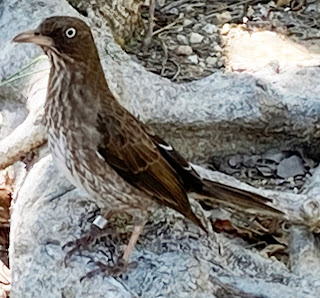
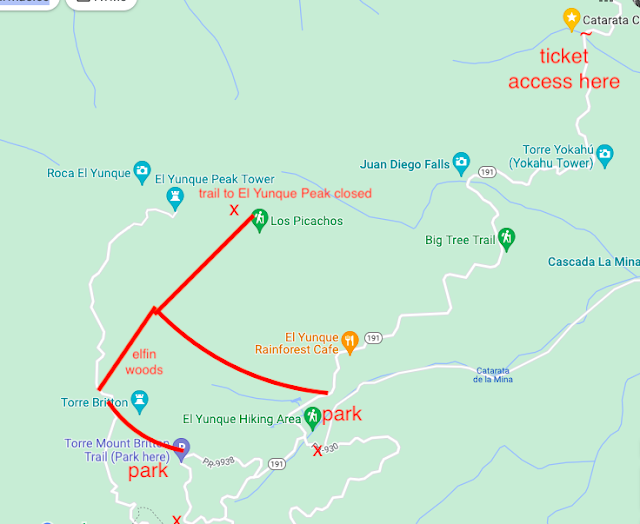








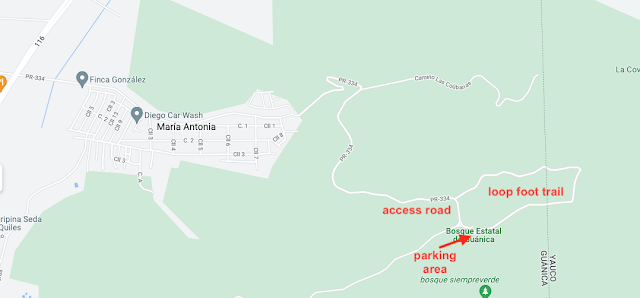

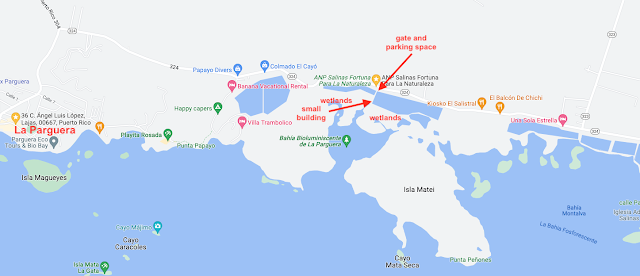

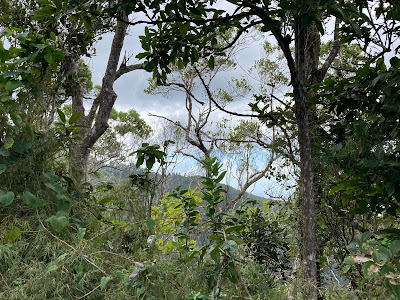

Thanks for the write-up. We’re in PR now and have seen a great variety of birds while in the northeast, north-central and currently in La Parguera. Sad to see so many invasive species but we are pleased with what endemics and indigenous species we have seen. As always our best birding comes from sitting on the porch of whatever AirBnb we are staying in. We did see a few new species while driving/hiking in the hills northwest of La Parguera.
ReplyDelete